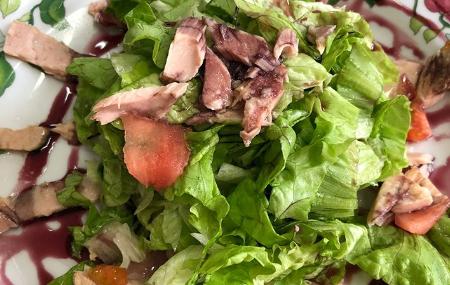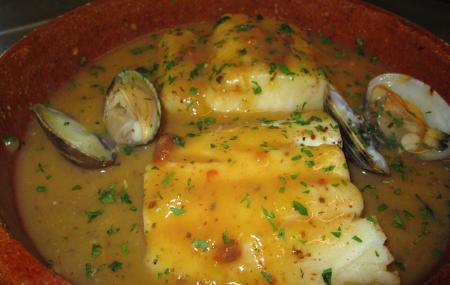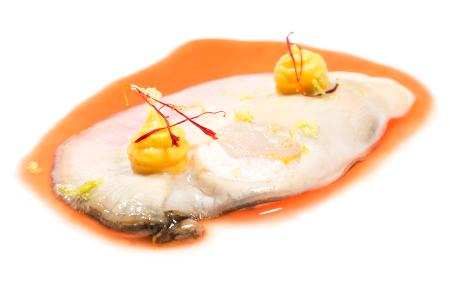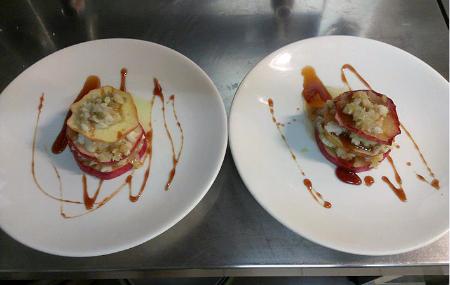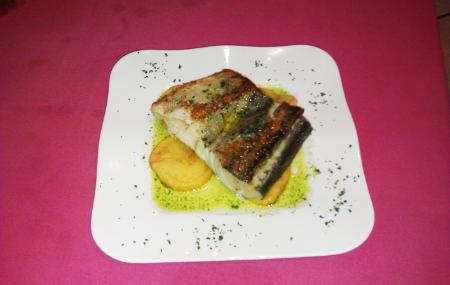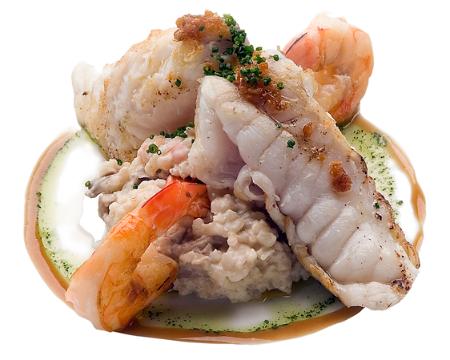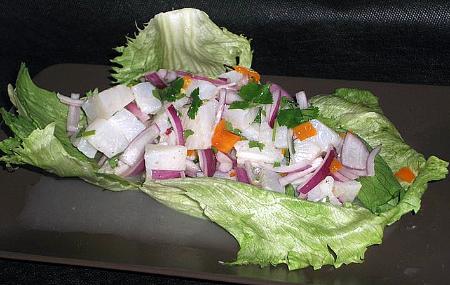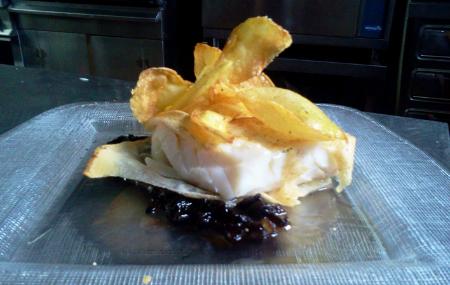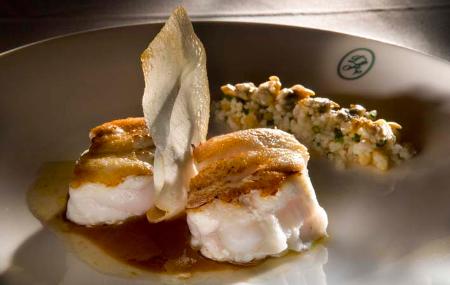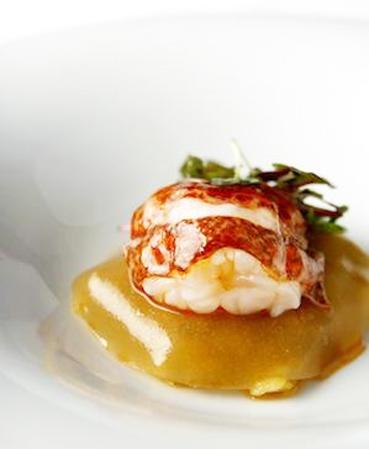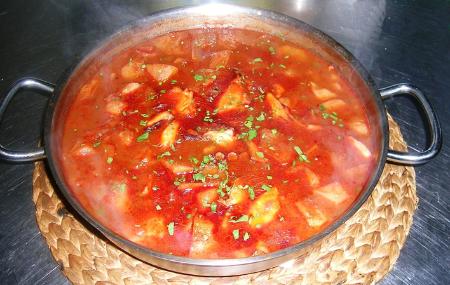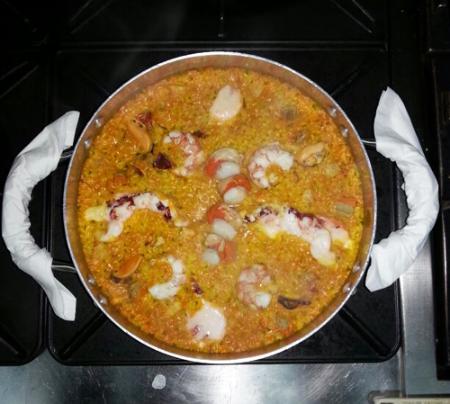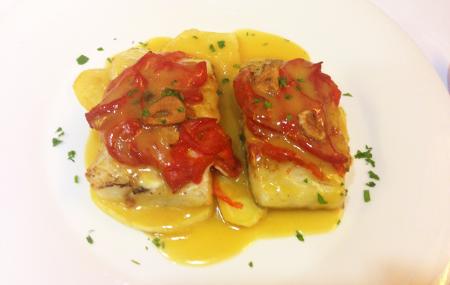Diverse and tasty. This is what the larder that stocks our fish markets is like, which we call ‘rulas' here. Each season is a world, each month the species that we can find in the fish shops and the restaurants are different.
The most abundant fish on our coasts are mackerel, sardines and hake. The red mullet with its intense colour, that feeds on small molluscs and algae, and the turbot, whose gelatin and skin gives it a unique flavour are thrilling. The John Dory is not inferior, the enormous dusky groupers impress, the red bream seduces, accompanied on the table by monkfish, red scorpionfish, conger eels, white seabream, giltheaded bream and bocartes (fresh anchovy).
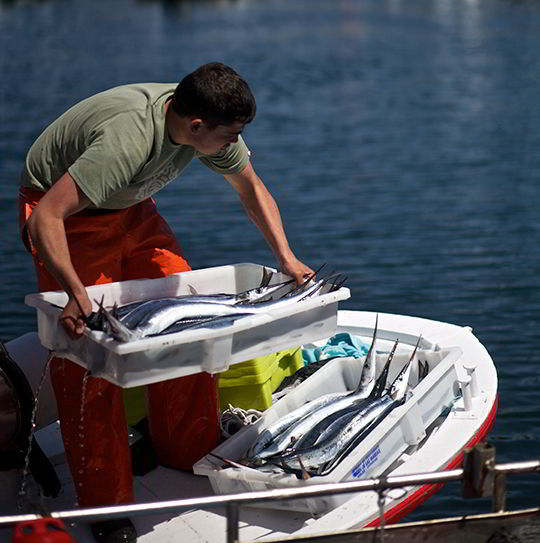
It is a fantastic experience. It serves to teach us about the tough profession of the fisherman, observe how well the fish is treated in the best boats and learn to differentiate species and categories. Hundreds of batches of fish and seafood will pass before us at the speed of light, some of incredible sizes. For example, the Puerto de Vega market allows tours all year upon reservation and the Avilés market does during the summer.

Among the seasonal products, the elver stands out in autumn, as well as sardines, cuttlefish and long-finned tuna in summer, prepared in a thousand different ways. The fillet only requires respect and a grill, but we usually prepare the other parts rolled up with onion, tomato and egg; in tacos, stew and nowadays even in sashimi or tataki. Who would have known!
Then we also have other less well-known but very tasty fish, don't hesitate to try it if you are offered it, like bream, plaice, needlefish, ballan wrasse or botona. And you have a lot and good seafood to choose from.
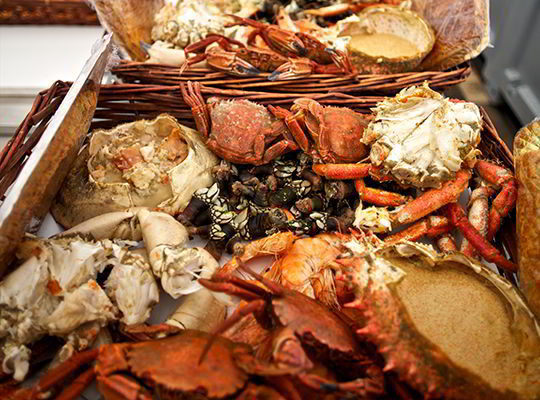
Asturians love to accompany a bottle of cider with a plate of periwinkles. And if we are generous, we add to the bar tab an "andarica" (velvet crab for the foreigners). So, if you want to feel like an Asturian, copy our good habits.
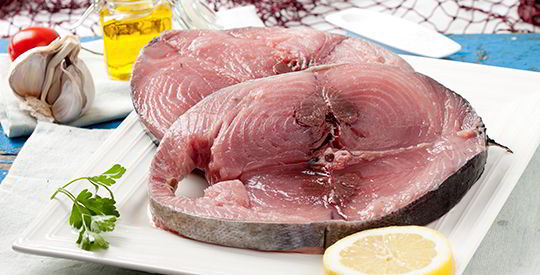
The variety of seafood that populate the Cantabrian allows us to always have a fresh product at all times of the year. Watch out because in Asturias we given almost everything a name. Thus, a spider crab from our coasts is called "from the country" if they are small "pelones" and if a barnacle has a lot of water, something which is not a good sign, "aguarón". The spider crab can be captured on our coasts from the middle of December until the end of July. It is a reddish colour and the females are especially valued for their precious meat and their coral.
They abound as well as with these cow species, velvet crabs, brown crabs, octopus, squid, limpets and when the cold arrives, oricios (sea urchins). We are very much a fan of these echinoderms that are not very attractive but have an intense, iodised flavour. More scarce are the razor shells, clams, langoustines and shrimp, but they do exist.
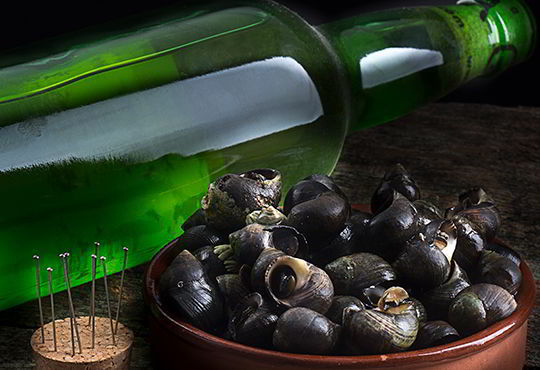
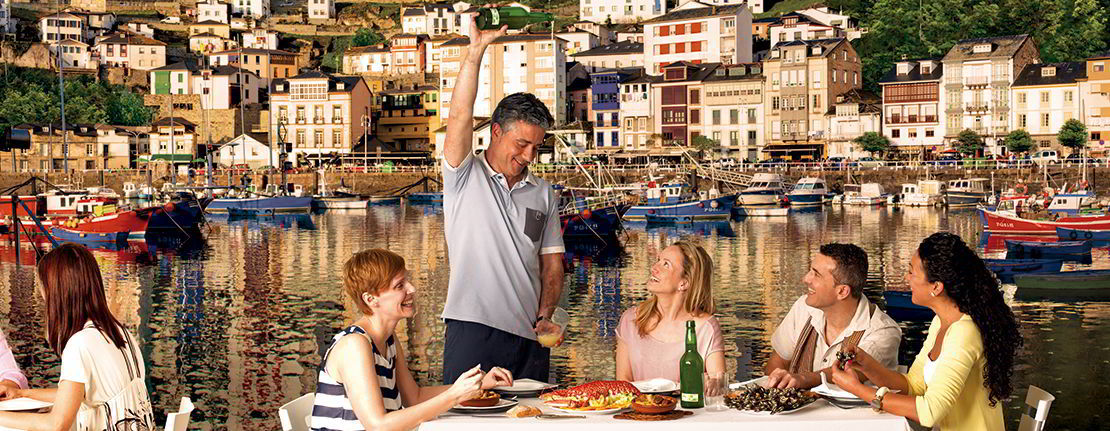
Seafood has its season. It is not true that you should only consume it in the months with the letter ‘r' but it is true that many shellfish appreciate the cold water of this time of year, such as brown crab and velvet crab. However, there are seafood that are better when summer approaches, such as the lobster. Versatile and with a good taste all year is the langoustine, which remains the same taste-wise every month, barnacles, mussels and oysters from the estuary of Eo river.
Some even have a whole catalogue of names, including for sizes and areas. The sea bass is called roballiza when it is big and furagaña if it is small. A small sardine is a parrocha. The word lobster doesn't exist here. If you want to understand a menu you will have to learn the word bugre, on the West coast, llubricante and in other areas llocántaru. Don't mention the word velvet crab, apply andarica and to name limpits, it's best to say llampares. The monkfish is pixín, sapito if it is portion size, golondro golondru, bream besugu, clams amasuela, cockles virigüetu. The brown crab is better known as ñocla, and sea urchins you already know we call oricios. They're so delicious!



